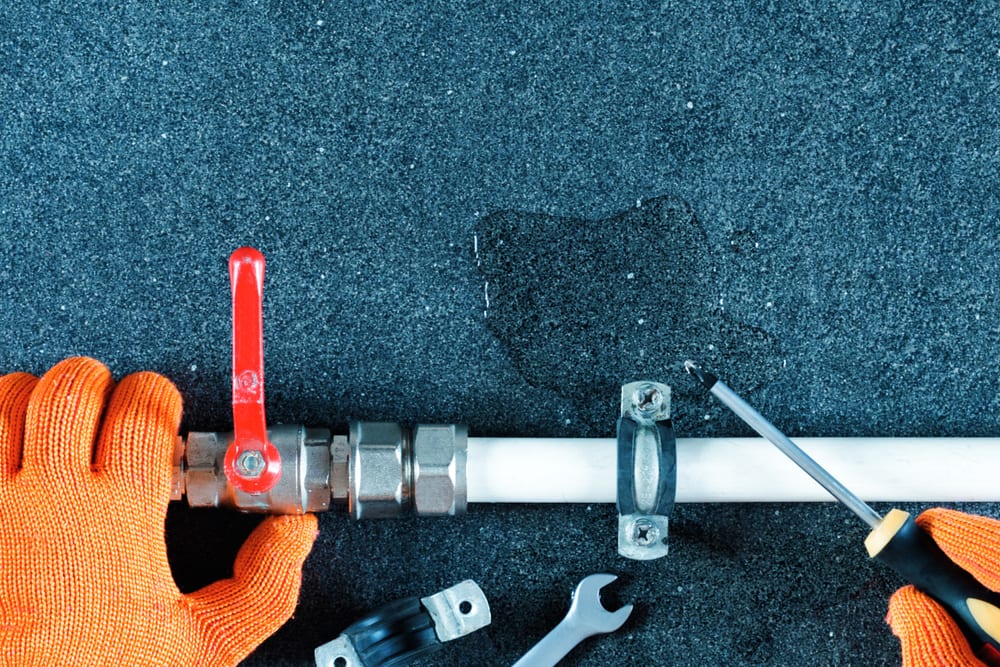How do you actually feel with regards to Finding hidden leaks?

Early detection of leaking water lines can alleviate a possible calamity. Some small water leaks may not be visible.
1. Examine the Water Meter
Every residence has a water meter. Checking it is a guaranteed manner in which aids you discover leaks. For starters, shut off all the water resources. Make certain no one will flush, use the faucet, shower, run the washing device or dishwashing machine. From there, most likely to the meter as well as watch if it will certainly alter. Considering that nobody is using it, there ought to be no movements. If it moves, that indicates a fast-moving leakage. If you detect no adjustments, wait an hour or two as well as check back once more. This indicates you may have a slow-moving leak that can even be below ground.
2. Check Water Intake
If you find sudden changes, despite your intake being the very same, it indicates that you have leaks in your plumbing system. A sudden spike in your costs suggests a fast-moving leak.
A consistent increase every month, even with the very same practices, reveals you have a slow leakage that's additionally slowly rising. Call a plumber to thoroughly inspect your home, specifically if you feel a warm area on your flooring with piping underneath.
3. Do a Food Coloring Test
When it involves water intake, 30% originates from toilets. Test to see if they are running appropriately. Decrease flecks of food shade in the storage tank as well as wait 10 minutes. If the shade in some way infiltrates your dish throughout that time without flushing, there's a leak between the storage tank and bowl.
4. Asses Outside Lines
Don't neglect to inspect your outdoor water lines also. Ought to water leak out of the connection, you have a loosened rubber gasket. One tiny leakage can squander tons of water as well as spike your water expense.
5. Evaluate and Examine the Situation
House owners need to make it a practice to check under the sink counters and even inside cabinets for any bad odor or mold development. These 2 red flags suggest a leakage so prompt attention is needed. Doing regular evaluations, also bi-annually, can conserve you from a major trouble.
If you know your home is already old, keep a careful eye on your heaters, pipes, pipes etc. Check for discolorations and also deteriorating as the majority of pipes as well as home appliances have a life expectancy. They will additionally naturally deteriorate as a result of wear and tear. Don't wait for it to rise if you suspect leaking water lines in your plumbing system. Call a specialist plumber right now so you don't wind up with an awful mess in your house.
Early discovery of leaking water lines can alleviate a prospective catastrophe. Some little water leakages may not be noticeable. Examining it is a proven way that aids you discover leaks. One small leakage can lose tons of water and spike your water bill.
If you think leaking water lines in your plumbing system, don't wait for it to escalate.
WARNING SIGNS OF WATER LEAKAGE BEHIND THE WALL
PERSISTENT MUSTY ODORS
As water slowly drips from a leaky pipe inside the wall, flooring and sheetrock stay damp and develop an odor similar to wet cardboard. It generates a musty smell that can help you find hidden leaks.
MOLD IN UNUSUAL AREAS
Mold usually grows in wet areas like kitchens, baths and laundry rooms. If you spot the stuff on walls or baseboards in other rooms of the house, it’s a good indicator of undetected water leaks.
STAINS THAT GROW
When mold thrives around a leaky pipe, it sometimes takes hold on the inside surface of the affected wall. A growing stain on otherwise clean sheetrock is often your sign of a hidden plumbing problem.
PEELING OR BUBBLING WALLPAPER / PAINT
This clue is easy to miss in rooms that don’t get much use. When you see wallpaper separating along seams or paint bubbling or flaking off the wall, blame sheetrock that stays wet because of an undetected leak.
BUCKLED CEILINGS AND STAINED FLOORS
If ceilings or floors in bathrooms, kitchens or laundry areas develop structural problems, don’t rule out constant damp inside the walls. Wet sheetrock can affect adjacent framing, flooring and ceilings.
https://www.servicemasterbyzaba.com/blog/how-to-detect-water-leakage-in-walls/

I stumbled upon that piece of writing on Top leak detection hacks while doing research the web. Sharing is good. You never know, you may just be helping someone out. I praise you for your time. Visit again soon.